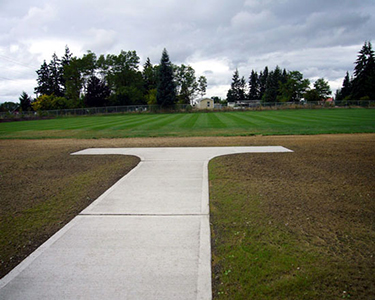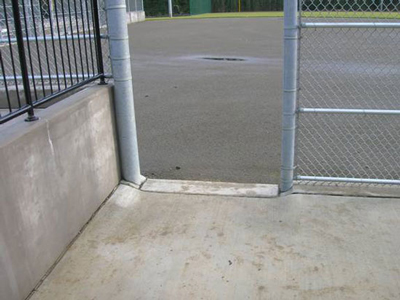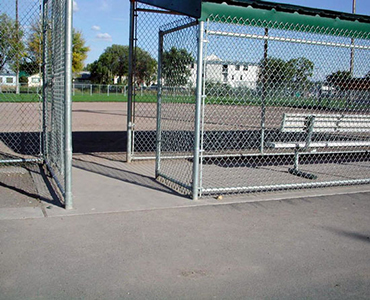- There are new scoping and technical standards for fields and access to the field of play in the 2010 ADA Standards for Accessible Design. Fields still need a firm, stable outdoor route of travel, forty-four inches wide minimum, from the parking lot to all elements and spaces. This includes a firm and stable route to the edge of the playing surface, through any gates, into dugouts, and to the fields.
- When gates are part of an access route, their width needs to be considered so they can provide appropriate access onto a field of play or a sports court. Providing a forty-eight-inch-wide opening (to keep forty-four inches of clear space) with accessible hardware and latches assures good access for most mobility devices and most likely for maintenance equipment too. It is preferred to have a sixty-inch-wide route of travel because less than that requires passing spaces, turnouts, or “T” intersections.
- For fixed soccer fields, under the new rules, each field must be served by at least one accessible route to the field of play. Designated or fixed seating is required to have a firm, stable, outdoor route of travel, at least forty-four inches wide, from the closest parking and any other element, amenity, or improvements to the most desirable, logical, and closest viewing area used by most spectators.
More Information
- S. Department of Justice’s Americans with Disabilities Act 2010 Standards for Accessible Design
- Washington Administrative Code 51-50-1101
Examples
Yelm Longmire Park
Photograph shows soccer field with an accessible route to an accessible viewing area. Many soccer fields only have grass pathways, which are difficult travel routes for those in wheelchairs.

Kent Service Club Dugout
Photograph shows a slight ramp at the baseball dugout’s entrance to the ball field.

Richland’s Columbia Park Play Field
Photograph shows a level dugout entry onto field.
